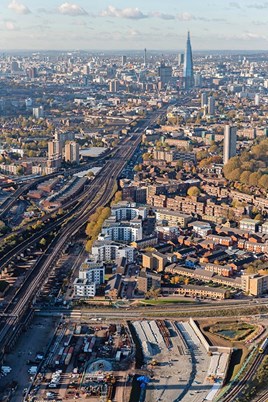Railways started as local ventures that grew into regional companies. A trip from London King’s Cross to Edinburgh Waverley 100 years ago would have meant the passenger travelling over the rails of the Great Northern, North Eastern and North British Railways. A few years later it would have been solely on the London & North Eastern Railway.
When nationalisation took place, the LNER became part of British Railways (together with the London Midland & Scottish, Southern and Great Western Railways). Yet BR retained a regional structure, such that King’s Cross-Edinburgh passed through its Eastern, North Eastern and Scottish Regions. The regions guarded their autonomy closely, and the general manager of each was a lofty figure who commanded much authority and respect.
BR reorganised itself away from regions to business units in the years before privatisation, but the switch to Railtrack owning the tracks brought a resurgence of local power under the zone directors. Railtrack failed, and its successor - Network Rail - sought a tight central grip to restore stability following accidents that exposed the network’s splits and fragility. At the same time, the Department for Transport was taking tighter control of the passenger franchises.
NR was brought under clear and direct government control in 2014 by a European accounting decision, ironically at a time when the British Government was pushing an agenda of localism and devolution. At least, the DfT can now instruct NR to devolve power. It can also gather power back to the centre whenever it wants. At the moment, devolution is in favour.
The need for decisions about investment and services to be taken more locally is clear when Nicola Shaw’s report The future shape and financing of Network Rail says: “Individual respondents conveyed a clear sense of disempowerment, with customers, passengers and freight shippers expressing frustration that decisions are taken in their absence, in a way that makes them feel that the railway operates in spite of them rather than for them.”
Shaw welcomes NR’s moves towards compiling regional scorecards, so that customers can see how it’s performing. She notes that each train and freight operator will need to act as a reasonable proxy for its customers - this will require train operators to listen closely to passengers and act on what passengers say, rather than simply regarding the DfT as ‘the customer’ (even though it’s the DfT with which TOCs sign their franchise agreements). Freight operators already talk closely with their customers, and often face a tricky task in explaining why NR can’t do something.
Devolution to routes will need other organisations to change. One is the Office of Rail and Road (ORR), which will need to split its work further and more clearly to provide local funding streams and effective oversight of local work. It did this when Scotland was split from the rest of Britain in rail funding terms. While ORR’s final determination for Control Period 5 (2014-2019) did not provide detail at route level, NR’s subsequent delivery plan did split the work it needs to do at route level - thus the foundations of this change are in place.












